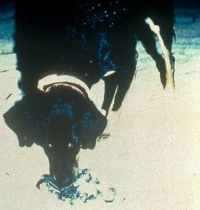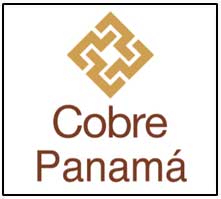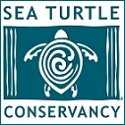 Invasive Species Predation
Invasive Species Predation
The Problem: Around the globe, sea turtles and their hatchlings fall victim to natural predators. Crabs, raccoons, armadillos, boars, birds
 These domesticated dogs, when left unattended, can dig up several sea turtle nests in one night. With as few as one in 10,000 hatchlings reaching adulthood, the destruction of only a few nests can have a devastating effect on a sea turtle population. Dogs eat the eggs and hatchlings and can even attack adult females while they nest. While sea turtles have developed special adaptations that allow them to be agile in water, they remain clumsy on land. They are not fast enough, or agile enough to escape these predators. Unable to retract their heads and flippers into their shell, like land tortoises, sea turtles are very vulnerable to these invasive predators.
These domesticated dogs, when left unattended, can dig up several sea turtle nests in one night. With as few as one in 10,000 hatchlings reaching adulthood, the destruction of only a few nests can have a devastating effect on a sea turtle population. Dogs eat the eggs and hatchlings and can even attack adult females while they nest. While sea turtles have developed special adaptations that allow them to be agile in water, they remain clumsy on land. They are not fast enough, or agile enough to escape these predators. Unable to retract their heads and flippers into their shell, like land tortoises, sea turtles are very vulnerable to these invasive predators.
Species Affected: All sea turtle species are affected by predation, especially on eggs and hatchlings.
The Solution: Humans can play a vital role in decreasing the threat of invasive species predation:
* Don't feed wildlife—animals will make a habit of returning to coastal areas in search for food, creating a threat to turtles;
* Don't leave your dogs and cats unattended;
* Do not leave any trash, especially garbage containing food, outside of your home;
* Support spay and neuter programs near coastal areas to decrease feral invasive species predation;
* Contact your local law enforcement if you witness any predation on sea turtle nests or hatchlings.
Case Study: Currently, Hobe Sound National Wildlife Refuge, located in Martin County, Florida, has ongoing efforts to reduce raccoon, skunk, rat
Related links:
* Florida Nesting Trends
* Sea Turtle Conservation and Education on the Tiwi Islands, including predation information
CUper-ina II






